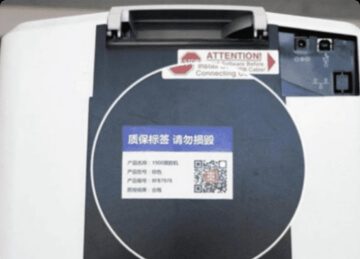Warranty management is a crucial aspect for businesses that provide after-sales support and services. It involves handling customer warranty claims, tracking product warranties, managing repair processes, and ensuring customer satisfaction. To streamline and enhance these processes, organizations can leverage a Warranty Management System (WMS). A WMS is a software solution that enables businesses to efficiently manage their after-sales warranty operations. In this article, we will discuss the key features and benefits of a WMS, as well as provide guidance on implementing this system in your organization.
1. Centralized Warranty Data Management:
A WMS allows for the centralized storage and management of warranty information, including customer details, product information, warranty terms, and repair history. This centralized approach improves data accuracy, reduces manual errors, and facilitates easy access to warranty data when needed.

2. Streamlined Warranty Claim Process:
With a WMS, businesses can automate and streamline their warranty claim process, right from claim initiation to final resolution. The system can generate warranty claim numbers, track claim statuses, and provide a transparent view of the entire process. This ensures timely processing and resolution of warranty claims, improving customer satisfaction and loyalty.
3. Efficient Repair Management:
A WMS enables organizations to manage the repair process seamlessly. It tracks the progress of repairs, assigns tasks to technicians, and provides real-time visibility into repair status. By optimizing repair operations, businesses can reduce turnaround time, enhance productivity, and improve overall service quality.
4. Analytics and Reporting:
By leveraging the data captured in a WMS, businesses can generate actionable insights and reports. These insights help identify warranty trends, recurring issues, and product performance. By analyzing this information, organizations can make informed decisions to improve product quality, reduce warranty costs, and enhance customer experience.
5. Integration with Business Systems:
A robust WMS can integrate seamlessly with existing business systems such as ERP (Enterprise Resource Planning) and CRM (Customer Relationship Management). This integration ensures accurate and synchronized data across various functional areas, enabling efficient collaboration among teams and departments.
Implementing a Warranty Management System in your organization involves the following steps:
a. Assess your current warranty processes and identify pain points or areas for improvement.
b. Research and select a suitable WMS vendor that aligns with your organization’s requirements.
c. Collaborate with the vendor to configure and customize the system based on your specific business needs.
d. Train your staff on using the system effectively and ensure smooth adoption across the organization.
e. Continuously monitor and evaluate the system's performance, and make necessary adjustments to maximize its benefits.
a robust Warranty Management System is essential for effectively managing after-sales warranty processes. By centralizing data, streamlining claim and repair processes, and generating actionable insights, businesses can improve customer satisfaction, reduce costs, and enhance overall operational efficiency. Implementing a WMS requires careful evaluation of your organization’s needs and collaboration with a reliable vendor. With the right system in place, organizations can truly excel in their after-sales warranty management.








